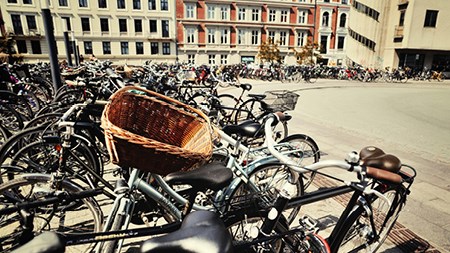As the world population balloons and cities become more crowded, a movement has started to take back the city centres and make them more pedestrian friendly.
The world’s population is growing. According to www.worldometers.info the world’s population stayed on a fairly level growth path up until the industrial revolution when it ballooned to one billion. From this point onwards the population has expanded rapidly. During the 20th century alone the population has grown from 1.65 billion to six billion. The world population currently stands at approximately 7.4 billion. It is estimated that the population will reach 10 billion by 2056.
It’s clear that the world’s population is growing and shows no sign of tapering off anytime soon. Population growth in itself isn’t a bad thing. However, where there is overpopulation, resources, space, freedom of movement and quality of life comes under pressure.
In a bid to counter the negatives associated with overpopulation, particularly in cramped cities, various urban plans and designs have been rolled out across numerous countries. Arguably some of the most recent progressive ‘blueprints’ stem from ‘New Urbanism’.
According to Wikipedia, the principles behind New Urbanism came about in the USA in the early 1980’s. New Urbanism promotes environmentally friendly habits by creating walkable, community-centric neighbourhoods which contain a wide range of housing and job types. Ten basic principles lie at the core of New Urbanism. These include, amongst others, the incorporation of traditional neighbourhood structures, sustainability and transit orientated development. Over the years New Urbanism principles have been successfully incorporated into many aspects of real estate development, urban planning and municipal land-use strategies.
New Urbanists support regional planning for open space, context-appropriate architecture and planning, adequate provision of infrastructure such as sporting facilities, libraries and community centres and the balanced development of jobs and housing. Advocates of New Urbanism believe it can reduce traffic congestion by encouraging people to ride bikes, walk or utilise public transport and can generally rein in urban sprawl.
Johannesburg is one of the latest cities to draw on New Urbanism principles to inform a new spatial development plan. According to Mayor of Johannesburg Mpho Parks Tau, the plan, dubbed ‘Corridors of Freedom’, focuses on well-planned transport arteries linked to interchanges where the focus will be on mixed-use development and high density accommodation supported by office buildings, retail development and opportunities for leisure and recreation.
Adds Tau:
In this future, ‘Joburgers’ will live closer to their workplace and be able to work, stay and play without having to use private, motorised transport. Safe, affordable and convenient buses, cycling and pedestrian activity will replace the carbon-burning private car. The Corridors of Freedom will transform entrenched settlement patterns which have shunted the majority of residents to the outskirts of the city away from economic opportunities and access to jobs and growth.
Such a plan arguably takes on greater importance in the context of a South African city. A key driver behind the plan is the elimination of boundaries created by South Africa’s apartheid past. To this day, Johannesburg is still largely fragmented by black and white areas and many neighbourhoods, suburbs and developments cater only to the rich or poor. Sprawling low-density areas without viable public transport are the norm and the majority of working class and poor citizens live on the fringes of the city.
Work on the corridors has already begun in the form of the Rea Vaya bus rapid transit (BRT) system which has enjoyed significant success since its implementation along proposed corridor routes. During the course of 2016, the routes and plans will be finalised. In the medium term, focus will be given to the route from Soweto to the CBD, the CBD to Alex, Alex to Sandton, Turffontein and the mining belt. In the long term, attention will shift to the route from Sandton to Randburg and Diepsloot as well as Alex to Ivory Park.
In addition to the core benefits of the plan, it is envisaged that there will be various other positive spinoffs too. In line with decreased private car usage, it is hoped that energy savings will be made and pollution will decrease. It is envisaged that a more compact city will also enhance social cohesion, “create a vibrant urban environment”, stimulate ancillary economic opportunities, improve access to education and improve the overall quality of life of all those who live along or near the corridors. Here’s hoping.




